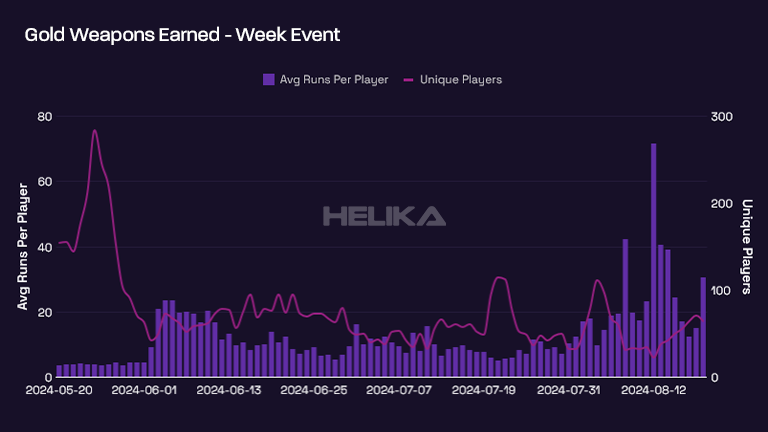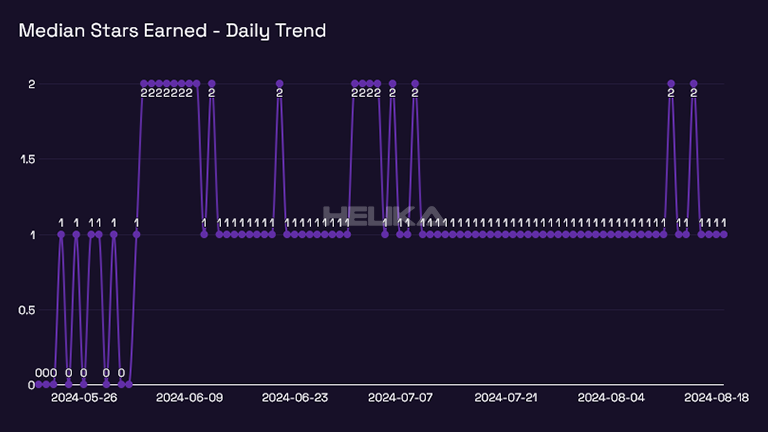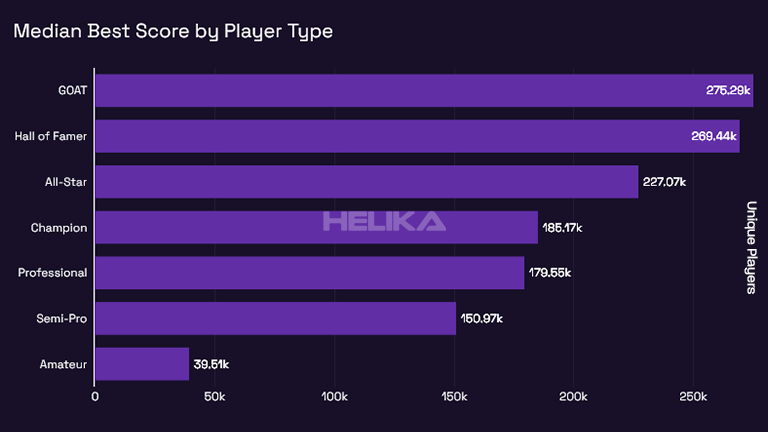Game developers must ask the simple question of “What motivates players to play a game?” in order to create an immersive and engaging gaming experience. The answer, however, is not as simple as it may seem. There are numerous factors that contribute to player motivation in game design, and researchers have been studying this topic for many years.
Make sure to read this article entirely as it holds secrets to building better games. #7 on this list is something that most game developers miss out on…
Key Takeaways:
- A player’s motivation can be influenced by many factors, both internal and external.
- Using game design elements to reinforce motivation is crucial.
- There can be more than one motivating factor.
- Analytics are better than an online survey.
1. Intrinsic Motivation vs Extrinsic Motivation
There are many types of motivation but they all typically fall into two main categories: intrinsic and extrinsic. Intrinsic motivation is when a player is motivated by internal factors, such as personal enjoyment of the gameplay or a sense of accomplishment. Extrinsic motivation, on the other hand, comes from external sources like rewards or recognition.
One theory that helps explain these two types of motivation is the self-determination theory. This theory suggests that humans have innate psychological needs for competence, autonomy, and relatedness. Intrinsic motivation is fueled by these needs being met, while extrinsic motivation can sometimes hinder them.
Game developers must find a balance between these two types of motivation to create a well-designed game that keeps players engaged. Let’s explore some narrower factors that contribute to these types of motivation in game design.
2. Social Interaction
One important motivation factor in game design is the desire for social interaction. This can be seen in multiplayer games, where players are motivated to play and interact with others in order to achieve a common goal or compete against each other.
With decentralized and online gaming platforms, game developers have an opportunity to create a sense of community within their games. This can be achieved through features such as in-game messaging, player forums, or even hosting virtual events.
3. Prestige and Acceptance
Bragging rights and status within a gaming community can also be a strong motivator for players. This is often seen in competitive games, where players strive to achieve higher ranks or gain recognition from their peers.
Game developers can tap into this desire for prestige by incorporating leaderboards, achievements, or other forms of player recognition within their game. This not only provides extrinsic motivation but also fosters a sense of accomplishment for players.
Social interaction is where players can support and uplift their team while prestige and acceptance are where they can show off their individual skills. Both of these factors contribute to creating a sense of community within the game, which in turn fuels intrinsic motivation.
4. Freedom and Liberty
With Web3, UGC, and modding, players now have the ability to create their own content within a game. This can provide a sense of freedom and liberty to players, allowing them to express themselves creatively and feel a sense of ownership over their gameplay experience.
Many players may be confined to a rigid structure in their day to day life so it can be motivating to find a game that allows them to freely express themselves without limitations. From customizable avatars and in-game structures, to creating and sharing mods or user-generated content, players can feel empowered and motivated to keep playing.
5. Difficulty Levels
Another factor that contributes to player motivation is the difficulty level of a game. Some players want a challenge, while others want a more relaxed and enjoyable experience. A well-balanced game will offer different difficulty levels to cater to a variety of player preferences.
By allowing players to choose their own level of challenge, it can increase their sense of competence and autonomy within the game. They may feel more in control and motivated to continue playing as they see themselves improving and overcoming challenges.
6. Progression and Rewards
In-game progression and rewards also play a significant role in motivating players to continue playing. Many games use a reward system, such as unlocking new abilities or items, to keep players engaged and motivated.

As players progress through the game and achieve goals, they can feel a sense of mastery and accomplishment. This can be reinforced by rewards that are visual or tangible, providing a sense of gratification and motivation to keep progressing.

7. Identity Creation
Video games offer players the opportunity to step into a different role or persona, creating an alternate identity within the game world. This can be a powerful motivator for players who may feel dissatisfied with their own lives.
A good example of this could be in role-playing games, where players can create and customize their own character. This process of identity creation allows players to express themselves in a way they may not be able to in real life, providing a sense of escapism and motivation to continue playing.
8. Scarcity Opportunities
The influence of scarcity has been a part of human psychology for a long time. As one of the most powerful psychological factors, a player’s interest and motivation can increase when presented with limited opportunities or resources within the game.
For example, a rare item that is difficult to obtain may drive players to continue playing in order to acquire it. Let’s imagine that there are only 5 available to claim for the first 5 players to reach a certain level at launch. This creates a sense of urgency and competition among players, motivating them to continue playing in order to have a chance at obtaining the rare item.
9. Discovering Mysterious
Easter eggs have become a norm in the game world. These are hidden secrets or surprises that players can find by exploring the game world in a certain way. Discovering these Easter eggs can provide a sense of accomplishment and satisfaction, motivating players to continue exploring and uncovering more.
Additionally, some games use mystery and intrigue as a main theme or storyline. Players may be motivated to continue playing in order to unravel the mystery and discover the truth behind it all. Curiosity and the need to close any knowledge gaps can drive players to keep playing, even if the game itself may become repetitive or boring. Lore and world-building can also contribute to this, as players become invested in the game’s story and want to see how it unfolds.
10. Surprises and Randomness
Game designers should understand that players have a natural desire for novelty. If something is too predictable or repetitive, the player’s interest could fade leading to a drop in retention rates. Introducing elements of surprise and randomness can help keep players engaged by providing unexpected events or outcomes. This could be in the form of random encounters, procedural generated levels, or randomized rewards.
Some examples could be a randomly generated value for a reward or random NPC encounters in a specific area. These surprises can pique the player’s interest and keep them engaged, as there is always the possibility of something exciting happening.
Using Analytics To Discover Player Motivation
Helika’s analytics team provides a useful tool when it comes to uncovering human factors such as player motivation. By analyzing data and identifying patterns, they are able to identify different types of players and their main motivations for playing a game.

Through this analysis, player archetypes can be identified, allowing game designers to better understand their target group and tailor the game experience to their main motivations. By catering to these motivations, designers can create a more engaging and satisfying experience for players.
The goal of this work is not only to increase retention rates but also to create gamer motivation profiles that can help guide future game development. By understanding what drives players to continue playing, designers can create experiences that are more appealing and keep players engaged for longer periods of time.

In addition to identifying motivations, analytics can also provide insights into the player base as a whole. By understanding the demographics and behaviors of their player base, game developers can make informed decisions about future updates and content releases. This ensures that each type of player receives a motivating reason to continue playing.
Finally, it’s also important to mention that there may be multiple motivations driving a player to engage with a game. This is why Helika’s analytics team uses a combination of data analysis and psychology to create comprehensive player motivation profiles. A main motivation factor can be identified, but it’s also important to consider secondary or overlapping motivations in order to create a well-rounded gaming experience.
Creating Motivation For Diverse Players
With such a diverse “Why” for playing games, it can be challenging for game developers to create a universally motivating experience. However, with the rise of data analytics and player research, there are methods that game developers can use to better understand their players’ motivation.
One way is through segmentation analysis, where players are categorized into different groups based on their motivations for playing. By understanding the different player types and their motivations, game developers can tailor their games to better cater to each group.
Another approach is to offer multiple play styles. For some, supporting their team is what motivates them. They enjoy being a caregiver. Whilst other require the ability to run wild and showcase their abilities. Different play styles, from healers to damage-dealers and support characters, can offer something for different types of players.
Additionally, providing a variety of rewards throughout the game can also help motivate players. Some may be motivated by earning virtual currency or unlocking new items, while others may be driven by the satisfaction of completing difficult challenges or reaching a high rank on leaderboards.
Ultimately, understanding player motivation and incorporating it into game design is crucial for creating an engaging and successful gaming experience. By utilizing analytics and player research, developers can continue to improve and evolve their games to better appeal to the diverse motivations of players.
Final Thoughts
As a game designer, understand the “player needs” is crucial. By taking the time to research and analyze player motivation, game developers can create more personalized and engaging experiences for their players. With your game systems optimized to match motivational factors, you can better retain players and attract new ones.
So, never underestimate the importance of understanding player motivation in game design! Keeping human motivations in mind with analytics to guide your decision-making will ultimately lead to a more successful and satisfying game for everyone involved. Feel free to contact us here at Helika to discover the top human needs that should be in your game design!



